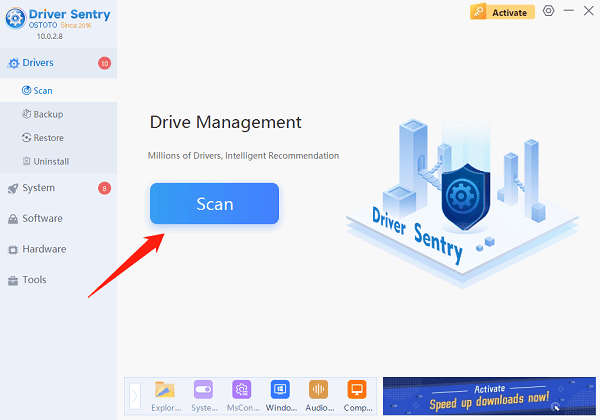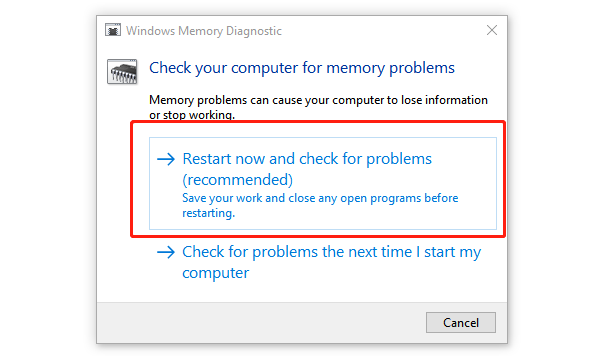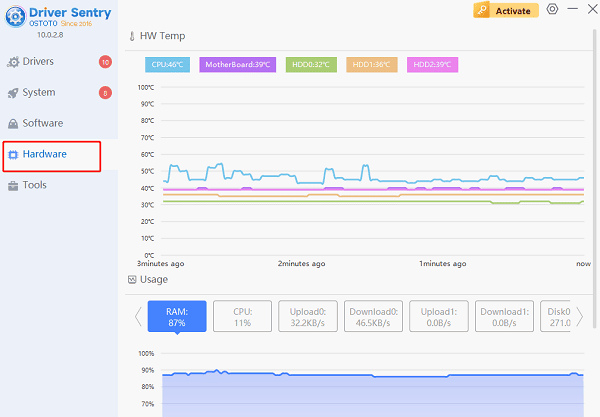
Frequent computer crashes can disrupt productivity and cause data loss. This guide offers solutions to troubleshoot and fix the issue, restoring normal operation.
1. Update Drivers
Outdated or corrupted drivers are a common cause of computer crashes. Ensuring your drivers are up-to-date is critical for system stability. Tools like Driver Sentry can automatically detect and update drivers, saving time and reducing the risk of installing incorrect drivers.
Download and install the latest version of Driver Sentry, then open the software and click "Scan".

Review the list of outdated or missing drivers, locate the ones that need updates, and click "Upgrade".
Restart your computer to ensure the updated drivers take effect.
2. Check Hardware Connections
Turn off your computer and unplug all power connections to ensure safe handling.
Open the case (for desktops) or check external hardware for laptops.
Inspect connected devices like mouse, keyboards, and printers for issues.
Disconnect each device one at a time to identify if any are causing the crashes.
Restart your computer after the inspection to see if the problem persists.
3. Test Your Memory
Press Win + R, type "mdsched.exe", and press Enter.
Select "Restart now and check for problems" to run the Memory Diagnostic Tool.

Wait for the tool to complete and display the results.
If the tool detects memory issues, replace the faulty RAM modules.
4. Clean Your Computer
Prepare anti-static gloves, compressed air, a small vacuum cleaner, and a soft brush.
Disconnect the power supply and wait for the device to cool down completely.
CPU fan and heatsink: Use compressed air to remove dust and ensure airflow.
Graphics card and power supply fans: Clear dust from the blades.
Inside the case: Brush away accumulated dust in corners.
Reassemble the components and power on the computer to check if the crashes are resolved.
5. Check Your Hard Drive
Open File Explorer by pressing Win + E, right-click the system drive (usually C:), and select "Properties".
Navigate to the "Tools" tab and click "Check" under Error Checking.
Open Command Prompt as an administrator by searching cmd in the Start menu and selecting "Run as administrator".
Run the following command and press Enter: chkdsk C: /f /r

Restart your computer as prompted and wait for the disk check to complete.
If the hard drive is damaged, back up important data and replace it.
6. Use System Restore
Search for "Create a restore point" in the Start menu and open it.
In the "System Properties" window, click "System Restore".
Select a restore point from when the system was functioning normally.
Click "Next" and confirm the restore operation.
The computer will restart and complete the restoration process. Check if the crashes are resolved.
7. Scan for Viruses and Malware
Press Win + I to open Settings, then go to "Privacy & Security".
Navigate to "Windows Security > Virus & Threat Protection", and select "Quick Scan" or "Full Scan".
Follow the scan results to delete or quarantine any threats.
Test the system for stability after malware removal.
8. Monitor System Temperature
Use Driver Sentry's hardware module to monitor real-time CPU, GPU, and motherboard temperatures.
Normal operating temperatures: CPU below 70°C, GPU below 80°C.
If temperatures are too high, follow the cleaning steps to remove dust from fans and heatsinks.

Check if the thermal paste on the CPU is dry or old.
Replace the thermal paste to improve heat transfer.
Ensure proper airflow inside the case.
Consider additional cooling solutions like extra fans or liquid cooling systems if needed.
Follow these steps to identify and fix computer crashes. If the issue continues, seek technical support or consider hardware replacement.
See also:
Steps to Update BIOS on a Computer
How to Fix Windows Msvcr120.dll Missing
How to Fix a Wireless Mouse Not Working
Guide to Fixing the "Print Spooler Service Not Running" Error